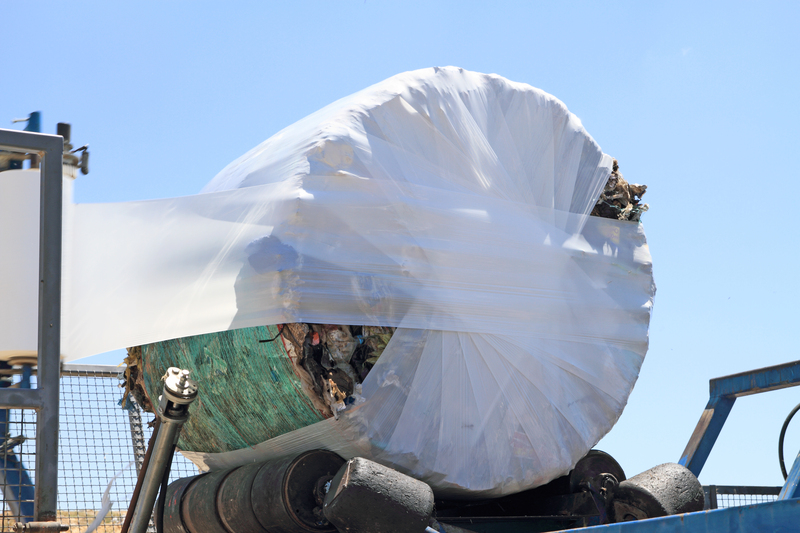Effective Waste Reduction Methods for Your Home
Looking to create a greener and more sustainable lifestyle? One of the most impactful steps you can take begins right at home: waste reduction. In this comprehensive guide, we'll explore practical, effective waste reduction methods for your home that are simple to implement and can make a big difference for our planet and your wallet.
Why Is Household Waste Reduction Important?
Every household generates a significant amount of waste each year, much of which ends up in landfills, contributing to pollution and greenhouse gas emissions. By adopting effective waste reduction practices at home, you not only conserve resources and energy but also help create a cleaner and healthier environment. Waste reduction saves you money, reduces clutter, and can even inspire those around you to join in the movement for sustainability.

Understanding the Principles: Reduce, Reuse, Recycle, and Beyond
The fundamental principles of waste management are often summarized as the "Three Rs": Reduce, Reuse, and Recycle. However, modern sustainable living includes additional Rs such as Refuse and Rot (composting). Let's dive deeper:
- Reduce: Minimize the amount of waste you create by making mindful purchasing decisions and avoiding unnecessary items.
- Reuse: Find new uses for items instead of discarding them.
- Recycle: Sort eligible materials so they can be processed and used to create new products.
- Refuse: Say "no" to freebies, excessive packaging, or single-use products you don't need.
- Rot: Composting organic waste like food scraps and yard trimmings to nourish the soil.
Practical Waste Reduction Tips for Every Room
1. Waste Reduction in the Kitchen
Kitchens are often the largest source of household waste. Here are some effective waste reduction methods for your kitchen:
- Plan Meals Ahead: Reduce food waste by planning meals, making shopping lists, and buying only what you need.
- Avoid Single-Use Items: Replace disposable plates, cutlery, and paper towels with reusable alternatives.
- Choose Products with Minimal Packaging: Opt for bulk items, products with recyclable packaging, or bring your own containers when possible.
- Compost Food Scraps: Set up a home compost bin for fruit and vegetable peels, coffee grounds, and other organic waste instead of tossing them in the trash.
- Smart Food Storage: Store food in glass jars or reusable silicone bags to keep items fresh and reduce spoilage.
2. Cutting Waste in the Bathroom
Although smaller in scale, bathrooms are notorious for generating plastic waste. Optimize your routine by following these home waste reduction strategies:
- Switch to Bar Soaps: Avoid plastic bottles by using bar soaps and shampoos.
- Refillable Products: Choose refillable containers for products like soap, lotion, and shampoo.
- Opt for Reusable Items: Replace disposable razors, cotton pads, and feminine hygiene products with reusable alternatives.
- Recycling Bathroom Items: Be aware of what is recyclable in your area - often, things like toothpaste tubes and deodorant sticks can be recycled if cleaned properly.
3. Decluttering and Waste Reduction in the Living Room
Living rooms are where we relax and spend time together, but they can also accumulate clutter and create hidden waste.
- Donate or Sell Unwanted Items: Pass along electronics, books, and decorations in good condition to someone who can use them.
- Choose Durable Furnishings: Invest in high-quality, long-lasting furniture and decor, reducing the need for frequent replacements.
- Cut Out Single-Use Decor: Limit decorations for events or holidays that get thrown away immediately after use.
- Use LED Lighting: Energy-efficient lighting lasts longer and cuts both waste and electricity costs.
4. Eco-Friendly Home Offices
With remote working and online schooling, home offices can generate significant paper and electronic waste. Here's how to control and reduce it:
- Go Digital: Switch to electronic files, invoices, and notes instead of printing unnecessarily.
- Print Smart: When printing is needed, use both sides of the paper and choose recycled paper whenever possible.
- Recycle Electronics Responsibly: Safely recycle old computers, phones, and batteries through designated recycling programs.
5. Waste Reduction Around the House: Laundry, Cleaning & More
Every room has potential for waste reduction:
- Switch to Eco-Friendly Cleaners: Many traditional cleaning products come in single-use plastics. Consider refill stations or DIY cleaners using vinegar and baking soda.
- Microfiber Cloths: Replace paper towels with washable, reusable cloths for everyday cleaning.
- Energy-Efficient Appliances: Upgrading to energy- and water-efficient washing machines and dishwashers can reduce waste and resource consumption.
Advanced Waste Reduction Techniques for a Sustainable Home
Embrace Zero-Waste Living
The zero-waste movement is gaining traction worldwide, encouraging households to dramatically cut their waste production by rethinking consumption habits. This may sound intimidating, but you can get started with small changes:
- Shop at Bulk Stores: Bring your own containers to buy groceries and household goods in bulk, avoiding plastic and unnecessary packaging.
- DIY Personal Care & Cleaning Products: Make your own soaps, cleaners, and beauty products to control ingredients and cut packaging waste.
- Reject Junk Mail: Remove yourself from mailing lists to prevent paper waste from accumulating at home.
Innovative Ways to Reuse Common Household Items
Getting creative with what you already own is a highly effective waste reduction method in your home. Here are some ideas to inspire you:
- Repurpose Glass Jars: Use empty jars as storage containers, vases, or even planters.
- Upcycle Old Clothing: Turn shirts into cleaning rags, tote bags, or pet bedding.
- Restore and Repair: Instead of discarding items with minor damage, look up how-to guides for simple repairs, or visit local fix-it events.
Eco-Conscious Shopping Habits
A significant portion of household waste comes from our shopping choices. Here's how to be a more sustainable shopper:
- Choose Recyclable and Compostable Packaging: Prioritize products with minimal, easily recyclable, or compostable packaging materials.
- Purchase Secondhand: Enjoy savings and waste reduction by buying gently used clothing, electronics, and furniture.
- Support Local & Sustainable Brands: Local producers often use less packaging and transportation, reducing overall waste and emissions.
Setting Up a Waste Management System at Home
For effective household waste reduction, an organized system is key. Here's a step-by-step approach:
- Audit Your Waste: For a week, monitor what you throw away most. This helps pinpoint areas where the most waste is generated.
- Set up Recycling Stations: Make recycling easy by placing labeled bins for paper, plastics, glass, and metals in convenient spots around your home.
- Designate a Composting Area: Indoors or outdoors, set aside a spot for collecting organic waste. If you don't have a backyard, try countertop or worm composters.
- Educate Household Members: Explain your new system so every family member participates and understands what's recyclable, compostable, or reusable.
- Review and Adjust: Revisit your system monthly to identify what's working, what isn't, and celebrate your progress!
How to Motivate Your Family to Participate
Sustainable waste reduction is most successful as a team effort. Here's how to get everyone on board:
- Lead by Example: Consistently show your commitment to waste reduction at home.
- Make It Fun: Turn waste sorting and composting into family activities. Reward children for eco-friendly habits.
- Share Information: Talk about why sustainable waste reduction matters for health, the environment, and the future.
The Environmental and Financial Benefits of Reducing Home Waste
Implementing effective home waste reduction methods offers both environmental and personal rewards:
- Reduces Greenhouse Gas Emissions: Landfills are major sources of methane, a powerful greenhouse gas. Less waste means less methane.
- Conserves Resources: Recycling and reusing reduce the demand for raw materials and energy.
- Lowers Household Expenses: Buying fewer disposable products and reducing food waste saves you money over time.
- Declutters Your Space: Less waste means a tidier, more organized home.
- Promotes Wellness: Avoiding chemicals and plastics in favor of natural, reusable products can improve household health.

Conclusion: Start Your Waste Reduction Journey at Home Today
Achieving a low-waste or zero-waste home is not only possible but also deeply rewarding. By embracing the strategies above, you'll create positive ripples for the environment, your community, and your personal well-being. Start small, celebrate progress, and remember that every action--no matter how minor--contributes to a healthier, cleaner world.
Let your home be a model for effective waste reduction methods that inspire others to join this crucial movement. Your choices matter!
Frequently Asked Questions
- What is the best way to reduce household food waste?
Plan meals, store food properly, compost scraps, and get creative with leftovers. - How can I recycle electronics at home?
Look for local e-waste recycling programs or events. Many retailers accept old electronics for recycling. - What products are hardest to recycle?
Mixed-material items, like juice cartons or chip bags, are challenging. Try to avoid these or seek specialized recycling options. - How can I get my children involved?
Make sorting and composting a fun game, and teach children about protecting wildlife and nature through reducing waste.
Additional Resources
Start your journey toward a waste-free lifestyle today--your home, your community, and the planet will thank you!